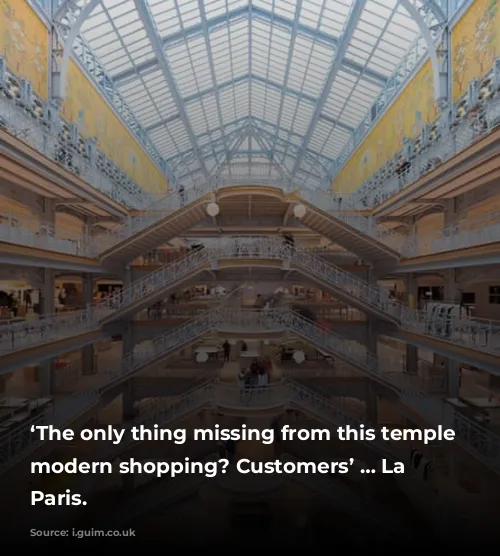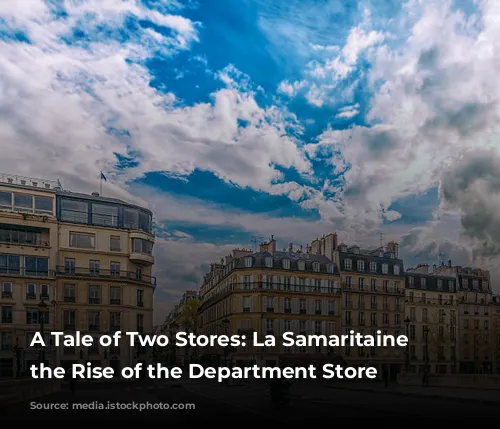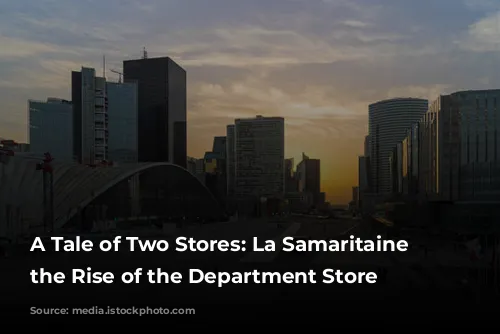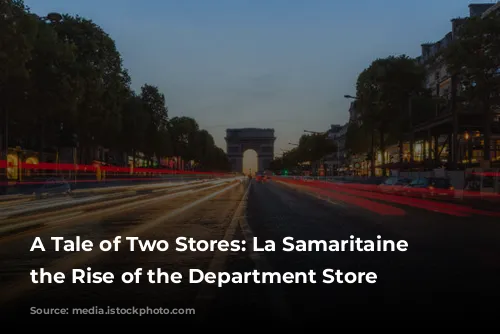Imagine this: You’re on the top floor of a grand Parisian department store, gazing out at a digital sunset over a shimmering sea. But instead of bustling with shoppers, this luxurious space is eerily empty. This is La Samaritaine, a once-thriving emporium now struggling to attract customers in an era of online shopping.
It’s a stark contrast to the building’s glamorous history, a tale intertwined with the birth and evolution of the department store itself. La Samaritaine, originally opened in 1870, was a place where Parisians could find everything from lingerie to lawnmowers. But after being acquired by LVMH in 2001, it underwent a massive, controversial renovation, emerging as a luxurious retail space complete with a five-star hotel.
The question is: has this opulent makeover been enough to save the department store in a world increasingly dominated by online shopping?
The answer, sadly, seems to be no. While tourists may flock to admire the building’s stunning architecture, few are actually purchasing anything.

The Rise of the Department Store: A Spectacle of Consumption
La Samaritaine’s struggles mirror a larger trend. Department stores around the globe are facing dwindling footfall, forcing many to close their doors. In their place, we see the rise of co-working spaces, libraries, and even apartments.
But before we write the obituary for the department store, let’s delve into its remarkable history. The Musée des Arts Décoratifs in Paris is currently showcasing an exhibition that celebrates the birth of this retail phenomenon, offering a captivating glimpse into the golden age of the grands magasins.
The exhibition reveals that the world’s first department stores were nothing short of astonishing spectacles. These “palaces of consumption” emerged in the 1850s, fueled by the economic growth of Napoleon III’s Second Empire. Their interiors were opulent beyond imagination, with vaulted glass ceilings, gilded chandeliers, and elaborate staircases.
These stores were not merely places to shop but social hubs. They were designed to be enjoyed, providing a luxurious setting for the newly leisured classes to see and be seen. The rising social elite of industrialists, bankers, and traders flocked to these grand spaces to flaunt their wealth and status.
The department store was a radical innovation for its time. It was a place where women could relax and socialize away from their husbands, a concept that resonated with the era’s changing social dynamics. The stores embraced the idea of customers as guests, welcoming them with no obligation to purchase. This was a revolutionary shift from the traditional, transactional experience of shopping.

Selling Dreams: The Birth of Marketing and Fast Fashion
The department store wasn’t just about luxury, it was about crafting an experience. Store owners began to hone the art of product display, juxtaposing items in enticing ways to “provoke an irredeemable desire for possession.” It was the birth of marketing as we know it.
This approach proved incredibly successful. The department store became a one-stop shop for the newly minted bourgeoisie, offering everything from clothing to furniture and home decor. They even played a crucial role in the rise of ready-to-wear fashion, as entire outfits and matching accessories were produced in bulk and sold as packages.
The exhibition also sheds light on the birth of fast fashion. As sales techniques became increasingly sophisticated, the annual calendar began to revolve around monthly sales periods, with specific items on offer each month. This was a strategy to shift stock, manage the flow of mass-produced merchandise, and create a sense of urgency in shoppers, encouraging them to stay ahead of the latest trends.

The Legacy of the Department Store: A Catalyst for Change
The department store was a revolutionary force, transforming urban life as we know it. But its legacy is a complex one, encompassing both its grandeur and the dark side of consumerism.
The exhibition makes it clear that the department store was a catalyst for the era of unbridled consumerism. It was where marketing methods were refined, sales techniques honed, and the global addiction to acquiring more stuff took root. The exhibition explores the impact of marketing to children, highlighting the ethical implications of this practice.
So, are the days of the department store truly numbered? The answer might not be so simple. While the retail landscape has shifted dramatically, the concept of the department store as a social hub holds potential for a new era.
Perhaps we can learn from the past and reimagine the department store as a place for learning, creativity, and community engagement. Just as libraries have been revitalized in recent years, these grand spaces could become centers for reading, relaxation, and cultural exchange.
It’s a thought-provoking question, one that invites us to reflect on the evolution of retail and the role of these iconic structures in our urban landscape.











